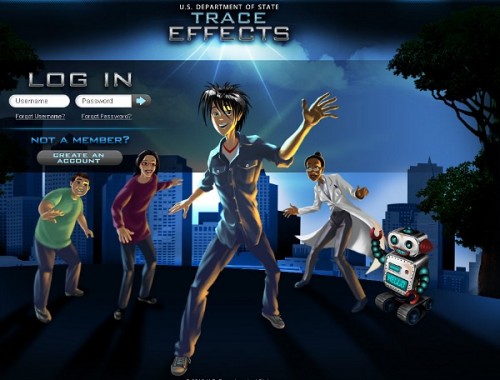For the game that I want students to play outside the
classroom for autonomous learning, I choose the Trace Effects. 

This game is designed to learn American English and culture.
This game will ‘complement students’ classroom English language instruction
through interactive 3D multimedia learning adventures’. The game ‘exposes users
to American society and explores themes related to entrepreneurship, community
activism, empowering women, science and innovation, environmental conservation,
and conflict resolution’. ALL in all, this game provides some real American life.
Students can not only learn language but culture of that language.
I played Chapter one of this game 3 times and get familiar with
how to play it and then the whole game. I find this game great for learning
outside of the classroom because it is divided into different chapters. During
the game, students can learn vocabulary and some communication strategies. In
order to get score, students need to communicate with people, for example, students
and library staff. Students can talk with different people and hear Native
American English with some body language when they are asked to do various
actions. In this way, Students can experience real campus life. During the
conversation, students need to be polite which means students have to follow
basic communication rules. When students complete some of the conversation
completely, they can get a score. Students can be motivated in this way so that
they will engage more in the following game. One great practice is that after
some actions, students will be asked to have a small quiz. Students can take
notes and review the dialog whenever they want.
My language learning objectives would be SWBAT infer the meaning
of some words in context; apply American daily communication skills in their
own life and describe the problems and ask for help from others with target
language.
I can use this game in my teaching because after asking
students to play the game at home, I can design some role plays using scenes in
the game to see if students can perform successfully using target vocabulary
and expressions. This is one way of assessing. Also, I can make students into
groups and assign each group different topics in the game to do a presentation.
Last but not least, I can ask students to write an essay explaining the
problems Trace encountered and how he solved them.




